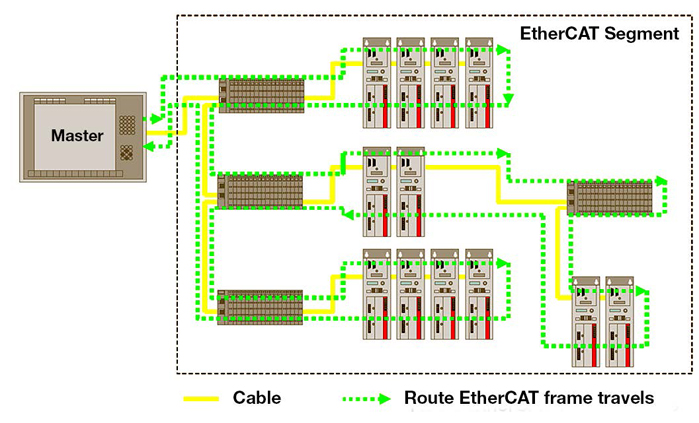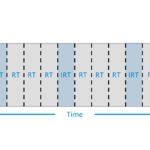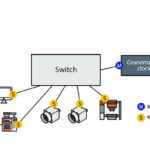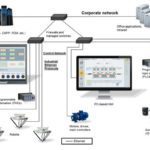For industrial networks, two of the most important performance factors are determinism and speed. In other words, industrial networks must be able to deliver data in a specified, predictable period of time, and they need to do so as quickly as possible. When describing network speed, three specifications are typically used: bit rate, baud, and cycle time.
Here, we’ll look at how these three measures of network speed are related and which one is typically considered the most important for industrial networks.
Bit rate
One measure of a network’s speed is its bit rate — the number of bits it can transmit per period of time, typically expressed as kilobits per second (kbit/s or kbps), megabits per second (Mbit/s or Mbps), or gigabits per second (Gbit/s or Gbps). In network terminology, the bit rate is sometimes referred to as the network’s bandwidth — for example, EtherCat G is often described as having a “bandwidth” of 1 Gbit/s.

Image credit: Fluke Corporation
Bit or byte?
A bit is a quantity of digital data — represented as either “0” or “1.” While the unit “bit” is used when referring to the amount of data transferred, the unit “byte” is used when referring to the size of a set of data. (One byte equals 8 bits). For example, download and upload speeds advertised by internet providers are given in bits per second (typically Mbps), but the data storage capacity on your computer is specified in bytes (e.g. 2 GB or 1 TB).
Note that in the unit abbreviations, the”b” representing “bit” is lowercase (Mbit, Mbps), and the “B” representing “byte” is capitalized (kB, MB, GB).
Baud
The term “baud” refers to the signal on which bits of data are carried. This signal undergoes changes — in terms of voltage, frequency, or phase — multiple times per second, and these changes are referred to as symbol changes, or sometimes, as signaling events. The term “baud” is an expression of the rate of symbol change: 1 baud (Bd) equals one symbol change per second.
If a signal has only two states, and each state carries one bit, then the bit rate and the baud (sometimes referred to as the “baud rate” or “signal rate”) are equal. However, it is possible for symbols to have more than two states, so multiple bits can be carried on one signal. In these cases, the the bit rate (bps) will be higher than the baud rate (Bd).
The bit rate is more commonly used than the baud (or baud rate) to describe the speed of industrial networks, although baud rate is still used in some contexts. And it’s not uncommon to see a baud rate specification given in terms of bits per second — “baud rate = 100 Mbps,” for example — although this is actually the bit rate.
Cycle time
The cycle time in an industrial network is the time required for data to be transmitted from a master (controller) to all the nodes (devices) in a network, and then the updated data returned to the controller. Unlike bit rate or baud, there are numerous variables that contribute to cycle time, including the amount of data being transmitted, the number of nodes in the network, the length of network cable, the presence of hubs and switches, and the processing delays inherent in the network devices themselves.

Image credit: IEB Media
Cycle time is typically the most important measure of speed for industrial networks because it determines how quickly the devices — servo drives, switches, and actuators — can be updated to ensure the system behaves as intended.
For example, in a machine tool application, the spindle driver needs to receive updated torque commands in time to correct any errors in position and prevent operations that could result in scrap, rework, or possibly even damage to the machine. This is why many Industrial Ethernet protocols have been developed with the explicit goal of minimizing the network cycle time — to meet the demands of increasingly sophisticated, multi-axis, coordinated motion.







Leave a Reply
You must be logged in to post a comment.